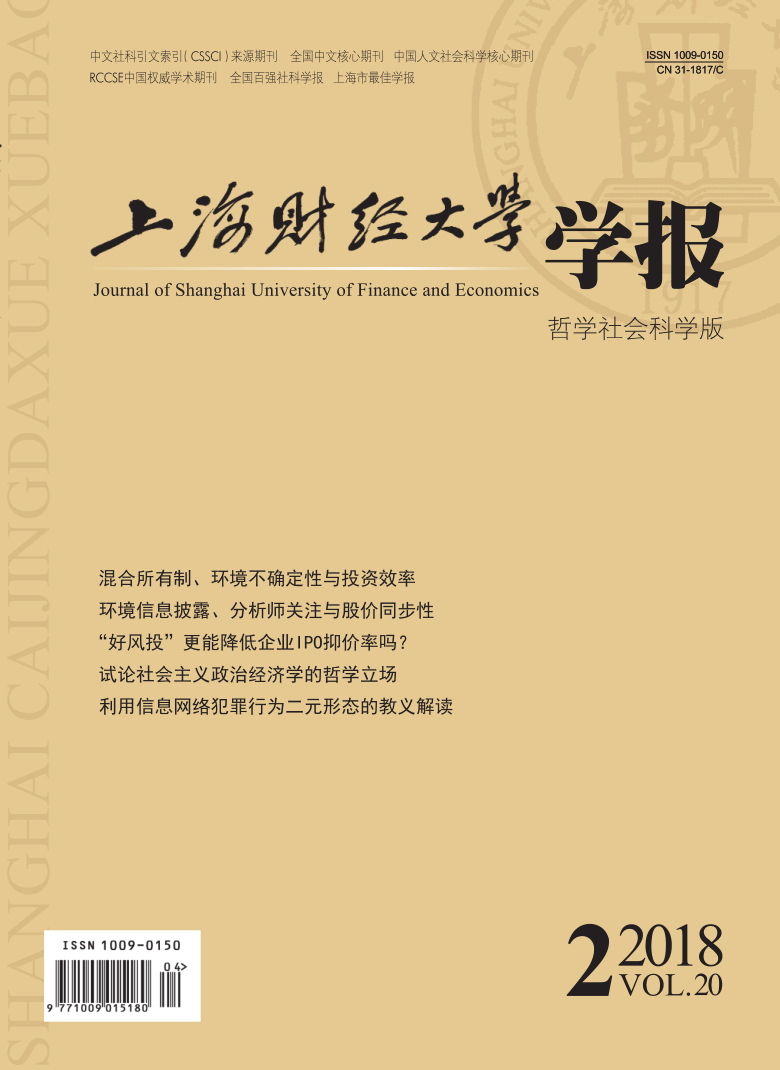Since 2008, government agencies such as the Shanghai Stock Exchange and the Ministry of Environmental Protection in China have issued a series of policies to encourage and guide Chinese enterprises to carry out environmental information disclosure. With regulation strictness, more and more enterprises start to pay attention to the impacts of their own production and operation on the environment, and disclose environmental information to demonstrate their environmental compliance. Environmental information becomes an important source for corporate idiosyncratic information, not only reflecting enterprise environmental risk & transmitting business signal, but also affecting enterprise financing and valuation estimation. Investors could use the environmental information to assist in investment decisions. As a representative of emerging markets, the volatility of the Chinese stock market is greatly impacted by the noise, and the research conclusions on stock price synchronicity are not consistent. The existing " information efficiency view” holds that corporate idiosyncratic information is the main factor leading to high-degree individual volatility, while a " noise-based view” argues that noise and irrational factors are the main causes of individual fluctuations. Therefore, it is valuable to explore whether environmental information disclosure can help reduce uncertainty on firm’s development and improve stock price synchronicity. This paper uses a sample of Chinese A-shared listed firms in the environmental sensitive indu-stries between 2011 and 2015 to investigate the relationship between environmental information disclosure and stock price synchronicity, and the role of analyst attention in moderating the relationship in the Chinese stock market. The results suggest as follows: firstly, environmental information disclosure of listed firms, no matter it covers significance, quantitative or timing issues, is positively correlated with stock price synchronicity; secondly, corporate environmental information disclosure would not usually draw extra attention from analysts; thirdly, analysts would help to interpret environmental information disclosed by companies, which mitigate the correlations between environmental information disclosure and stock price synchronicity. Therefore, when the noise is the main driving factor for stock price synchronicity, environmental information disclosure would help to reduce the uncertainty about firms’ future development, playing a role in reducing noises. All those findings have contributed new and more direct evidence to the understanding of environmental information efficiency in Chinese stock market.
 / Journals / Journal of Shanghai University of Finance and Economics
/ Journals / Journal of Shanghai University of Finance and EconomicsJournal of Shanghai University of Finance and Economics
LiuYuanchun, Editor-in-Chief
ZhengChunrong, Vice Executive Editor-in-Chief
GuoChanglin YanJinqiang WangWenbin WuWenfang, Vice Editor-in-Chief
Environmental Information Disclosure, Analyst Attention and Stock Price Synchronicity: Evidence from Strong Environmental Sensitive Industries
Journal of Shanghai University of Finance and Economics Vol. 20, Issue 02, pp. 39 - 58 (2018) DOI:10.16538/j.cnki.jsufe.2018.02.003
Summary
References
Summary
Cite this article
Wei Ping, Zeng Gaofeng. Environmental Information Disclosure, Analyst Attention and Stock Price Synchronicity: Evidence from Strong Environmental Sensitive Industries[J]. Journal of Shanghai University of Finance and Economics, 2018, 20(2): 39-58.
Export Citations as:
For
ISSUE COVER
RELATED ARTICLES




 16422
16422  18399
18399

